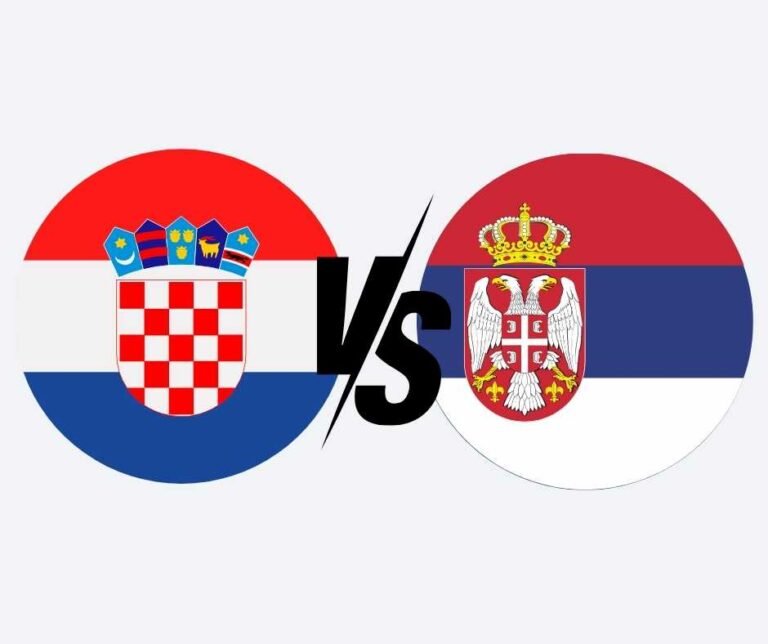Written by: Olivera Tolimir
In our previous blog post, we introduced you to the present tense in the Serbian language. You saw that our present tense can be tricky, but we promised you the future tense is more fun and easier to remember! So, if you want to learn the future tense in Serbian, you’re at the right place!

What do We Need to Learn Serbian Future Tense?
There are three things we need to know to form the future tense in Serbian:
- the present tense of the auxiliary verb hteti (to want);
- the infinitive of the verb
- rules for combining the first two bullets
The Present Tense of the Auxiliary Verb HTETI
To learn Serbian futur (that’s how we call it), first, you need to understand and memorize the conjugation of the verb hteti (to want). The conjugation of the verb hteti goes like this:
Singular
- hoću (I want)
- hoćeš (you want)
- hoće (he/she/it wants)
Plural
- hoćemo (we want)
- hoćete (you want)
- hoće (they want)
You’ve probably noticed we didn’t write personal pronouns in front of the verb forms (personal pronouns are I, you, he/she/it...). That’s because they’re not necessary in these cases. In the sentence “Hoću čokoladu” (I want chocolate), it’s clear that a person is talking about themself. Why is it clear? Because of the ending –u.
Maybe now is a good time to remember that hteti and moći (can) are the only two verbs in Serbian whose present tense ends in -u in the first person singular. For all the other verbs, that ending is -m (Ja radim = I work).
But let’s get back to the verb hteti. We said it means to want, and it’s true. We use its full form (the one conjugated above) when we wish to say we want something. But to form the future tense, we shorten it by removing the first two letters (ho-). So, it looks like this:
Singular
- ću
- ćeš
- će
Plural
- ćemo
- ćete
- će

The Infinitive of a Verb
The infinitive is the second thing we need to learn Serbian future tense.
As you know, the infinitive is the basic form of a verb. That’s the form you’ll find in a dictionary. Every verb in Serbian has an infinitive that ends in either –ti or –ći.
Serbian verbs with a -ti infinitive
Infinitive that ends in –ti is considered the regular infinitive in Serbian, and the more common one. Some examples of verbs with a –ti infinitive are spavati (to sleep), učiti (to learn / to teach), and brinuti (to worry).
There are two ways to form the future tense out of these verbs.
The first way is to put the corresponding form of the verb hteti next to the infinitive, like this:
- Ja ću spavati. (I will sleep.)
- Ti ćeš učiti. (You will learn.)
- On će brinuti. (He will worry.)
The second way is to remove the ending –ti and “glue” the verb hteti instead of it, like this:
- spavati –> spava –> spava + ću –> Spavaću. (I will sleep.)
- učiti –> uči –> uči + ćeš –> Učićeš. (You will learn.)
- brinuti –> brinu –> brinu + će –> Brinuće. (He will worry.)

A special group of -ti verbs
In the examples above, you could see the vowels in front of the every –ti ending (spavati, učiti, brinuti). But some specific verbs end in –sti in the infinitive, for example, pasti (to fall), sesti (to sit), and krasti (to steal).
These verbs also form the future tense in two different ways.
The first way is the same as for all the other verbs: hteti + infinitive:
- Ja ću pasti. (I will fall.)
- Ti ćeš sesti. (You will sit.)
- Ona će krasti. (She will steal.)
The second way is specific because some sounds change:
- Pašću. (I will fall.)
- Sešćeš. (You will sit.)
- Krašće. (She will steal.)

Serbian verbs with a -ći infinitive
There are a lot of verbs in Serbian whose infinitive forms end in –ći. Some of them are reći (to say), pronaći (to find), seći (to cut).
With these verbs, there’s not an option to remove the ending –ći. The only way for them to form the future tense is to have the verb hteti in front or behind them:
- Ja ću reći. = Reći ću. (I will say.)
- Ti ćeš pronaći. = Pronaći ćeš. (You will find.)
- Ona će seći. = Seći će. (She will cut.)
As you’ve maybe noticed, when the future tense starts with the verb hteti (in our examples: ću, ćeš, će), there’s a pronoun at the beginning of the sentence. When the sentence starts with the infinitive part, there’s not a pronoun. It happens because there’s a rule that a sentence can’t start with the words ću, ćeš, će, ćemo, ćete, and će. In these cases, we have to begin a sentence with another word. It can be a pronoun or some other word.
Negative Forms of the Future Tense in Serbian
If you want to say that something won’t happen in Serbian, there’s an easy way to do so. You need to add ne (ne means no) to the verb hteti, and that’s it!
Here are the examples:
- Neću spavati.
- Nećeš učiti.
- Neće brinuti.
- Neću pasti.
- Nećeš sesti.
- Neće krasti.
- Neću reći.
- Nećeš pronaći.
- Neće seći.
The verb hteti is one of the four verbs in Serbian that have the negation glued to them. All the other verbs are written separately from the word ne. Can you remember the remaining three? If you can’t, check it in our previous blog post where we started to learn Serbian present tense!
Interrogative Forms of the Future Tense in Serbian
If you’d like to ask a question concerning the future, you can do it using the words da li:
- Da li ćeš spavati u hotelu? (Will you sleep in a hotel?)
- Da li će uskoro pasti kiša? (Will it rain soon?)
- Da li ćeš mi reći istinu? (Will you tell me the truth?)
We hope these rules will help you learn Serbian fast! What do you think – is it difficult to learn Serbian future tense?



